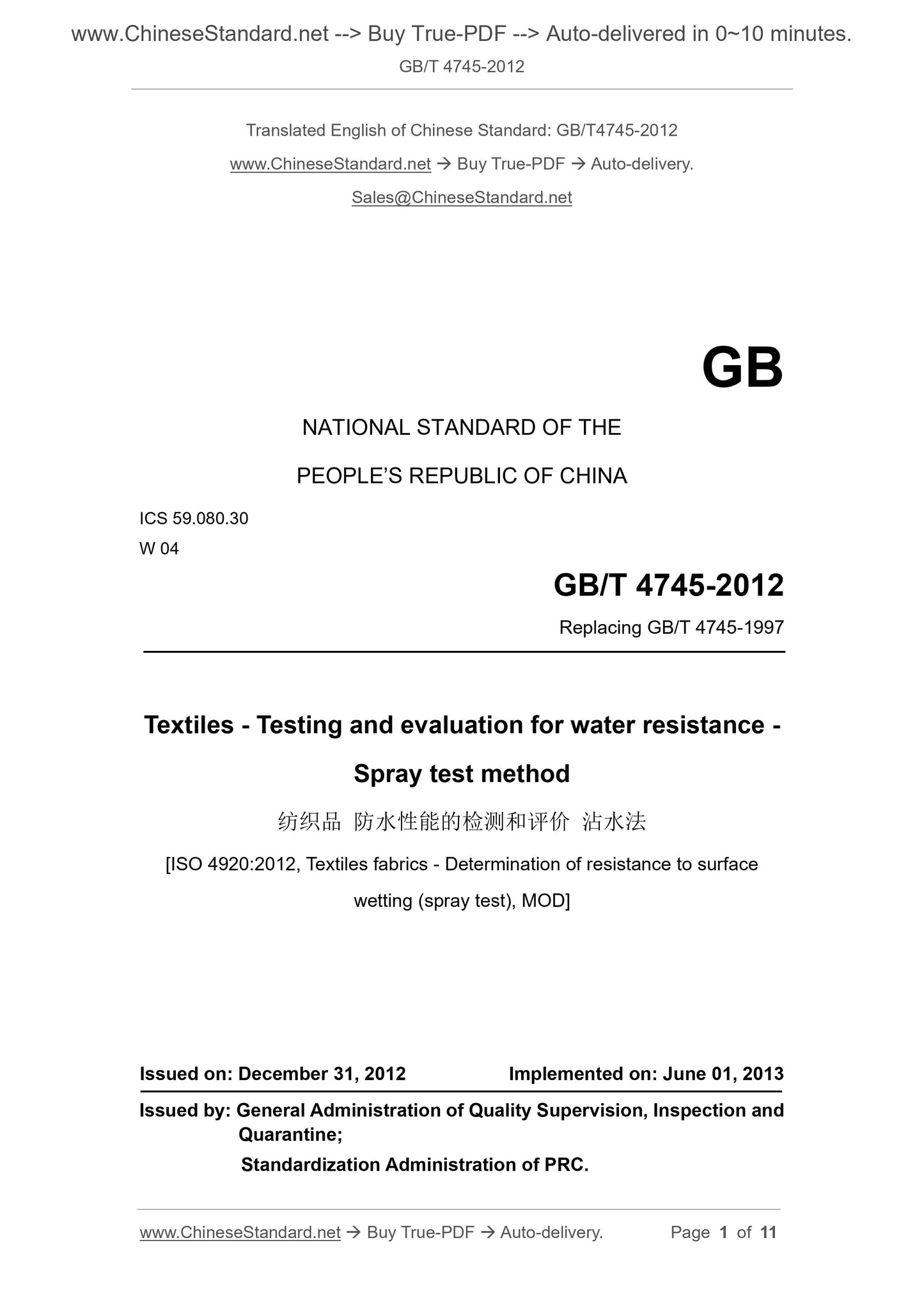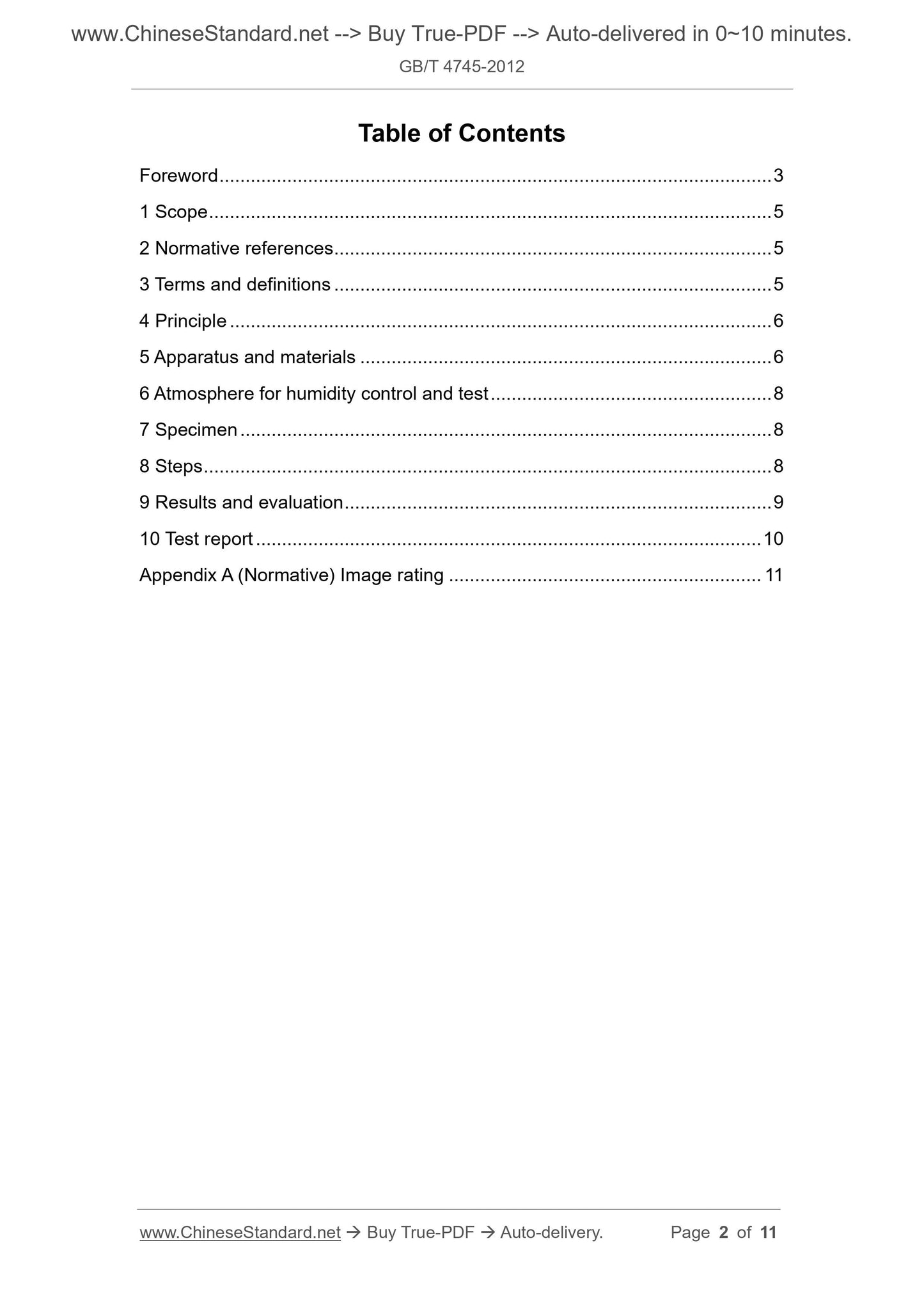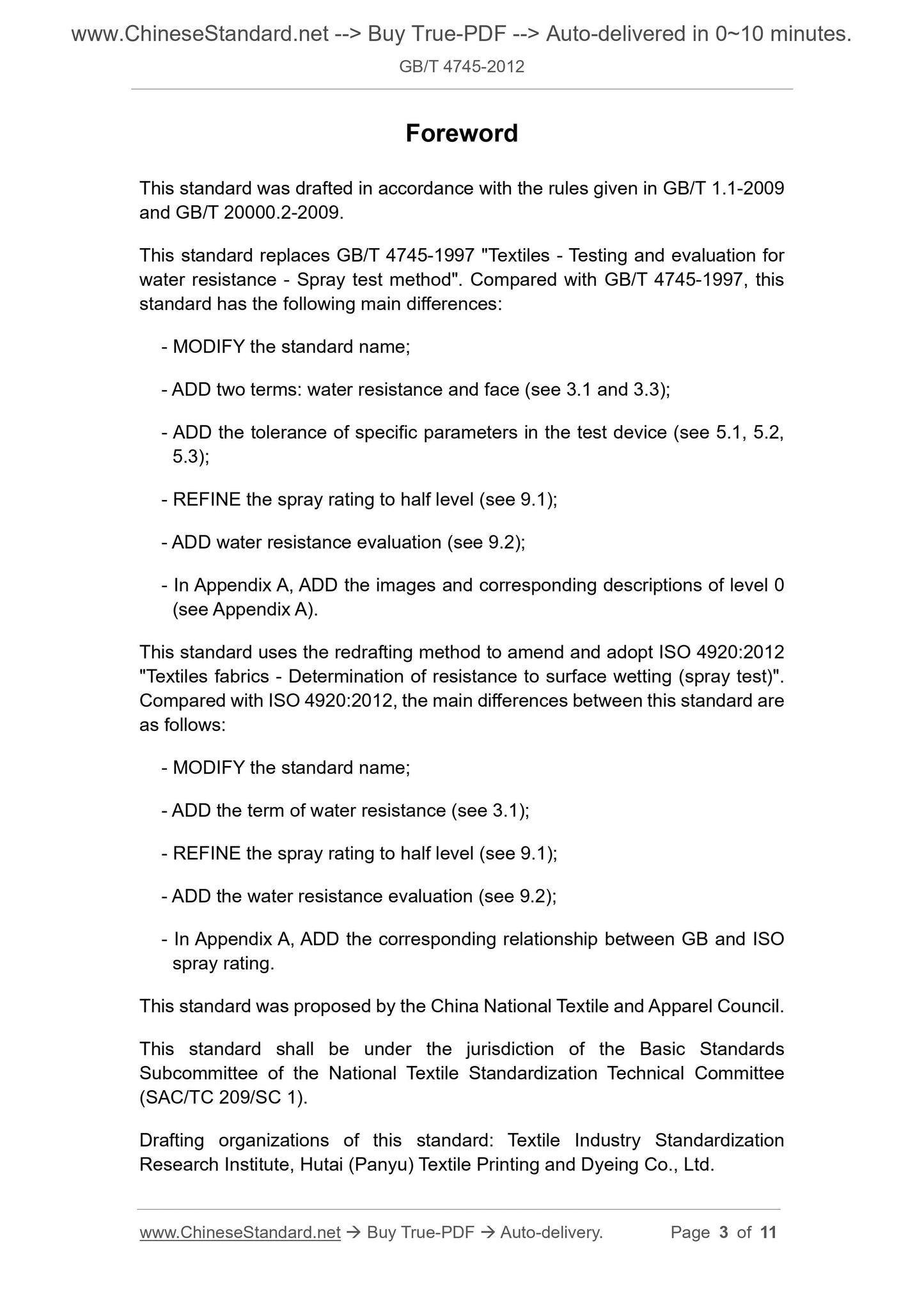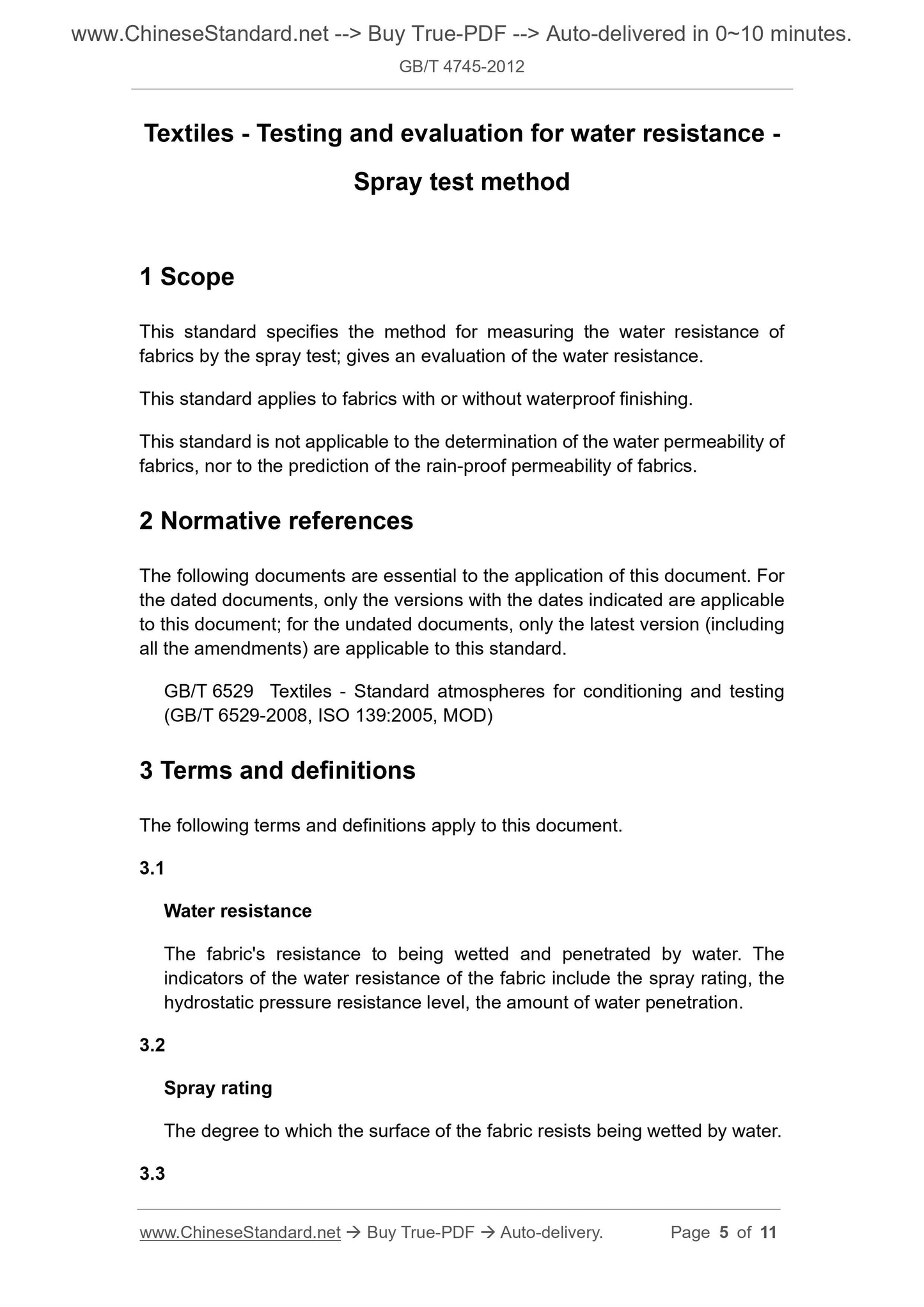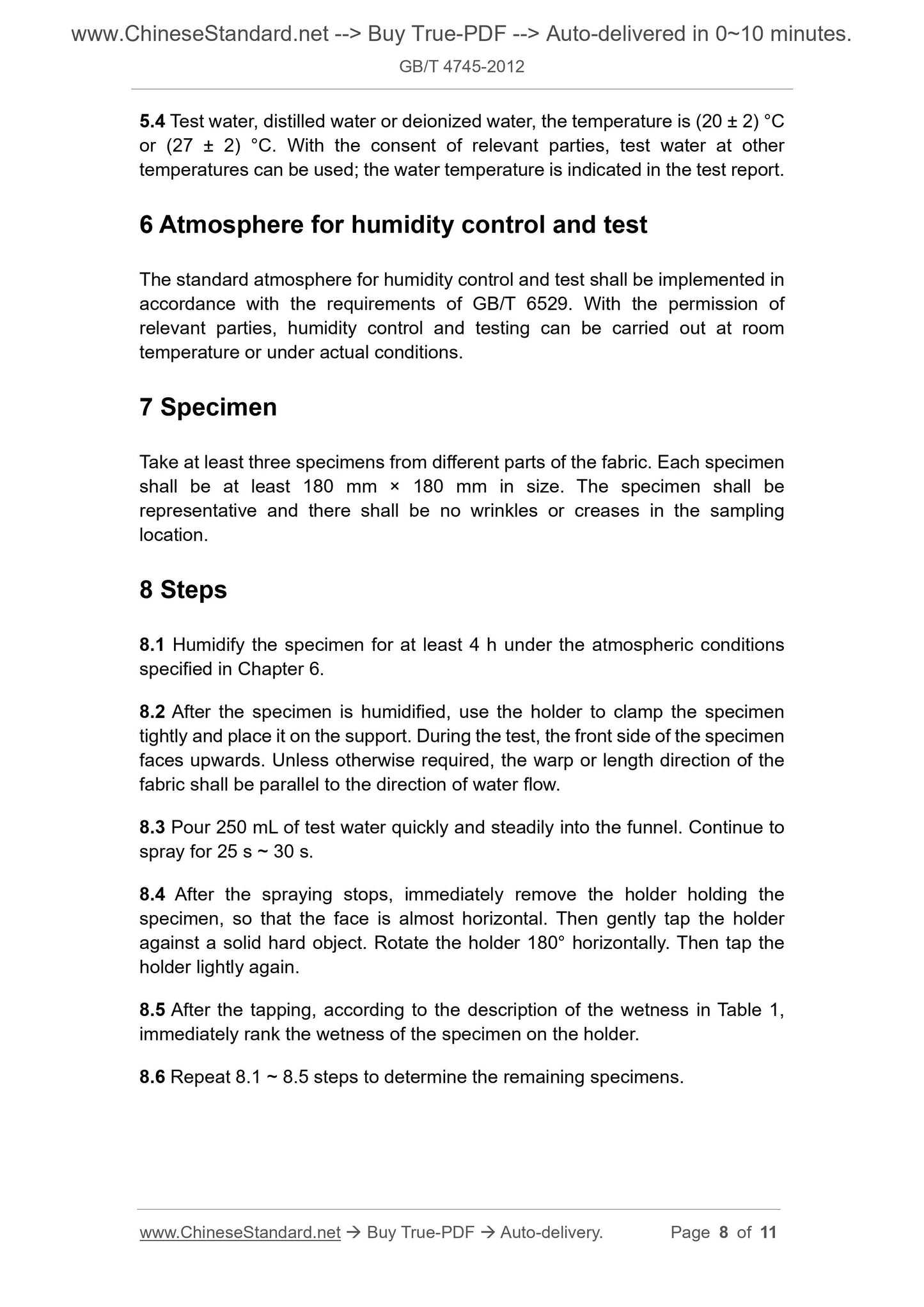1
/
of
5
www.ChineseStandard.us -- Field Test Asia Pte. Ltd.
GB/T 4745-2012 English PDF (GB/T4745-2012)
GB/T 4745-2012 English PDF (GB/T4745-2012)
Regular price
$70.00
Regular price
Sale price
$70.00
Unit price
/
per
Shipping calculated at checkout.
Couldn't load pickup availability
GB/T 4745-2012: Textiles -- Testing and evaluation for water resistance -- Spray test method
Delivery: 9 seconds. Download (and Email) true-PDF + Invoice.Get Quotation: Click GB/T 4745-2012 (Self-service in 1-minute)
Newer / historical versions: GB/T 4745-2012
Preview True-PDF
Scope
This standard specifies the method for measuring the water resistance offabrics by the spray test; gives an evaluation of the water resistance.
This standard applies to fabrics with or without waterproof finishing.
This standard is not applicable to the determination of the water permeability of
fabrics, nor to the prediction of the rain-proof permeability of fabrics.
Basic Data
| Standard ID | GB/T 4745-2012 (GB/T4745-2012) |
| Description (Translated English) | Textiles -- Testing and evaluation for water resistance -- Spray test method |
| Sector / Industry | National Standard (Recommended) |
| Classification of Chinese Standard | W04 |
| Classification of International Standard | 59.080.30 |
| Word Count Estimation | 9,957 |
| Older Standard (superseded by this standard) | GB/T 4745-1997 |
| Quoted Standard | GB/T 6529 |
| Adopted Standard | ISO 4920-2012, MOD |
| Regulation (derived from) | National Standards Bulletin No. 41 of 2012 |
| Issuing agency(ies) | General Administration of Quality Supervision, Inspection and Quarantine of the People's Republic of China, Standardization Administration of the People's Republic of China |
| Summary | This standard specifies the use of waterproof fabric wet test measures the performance of the method, and gives the waterproof performance evaluation. This standard applies with or without waterproof fabric finishing. This standard is not used to determin |
Share
